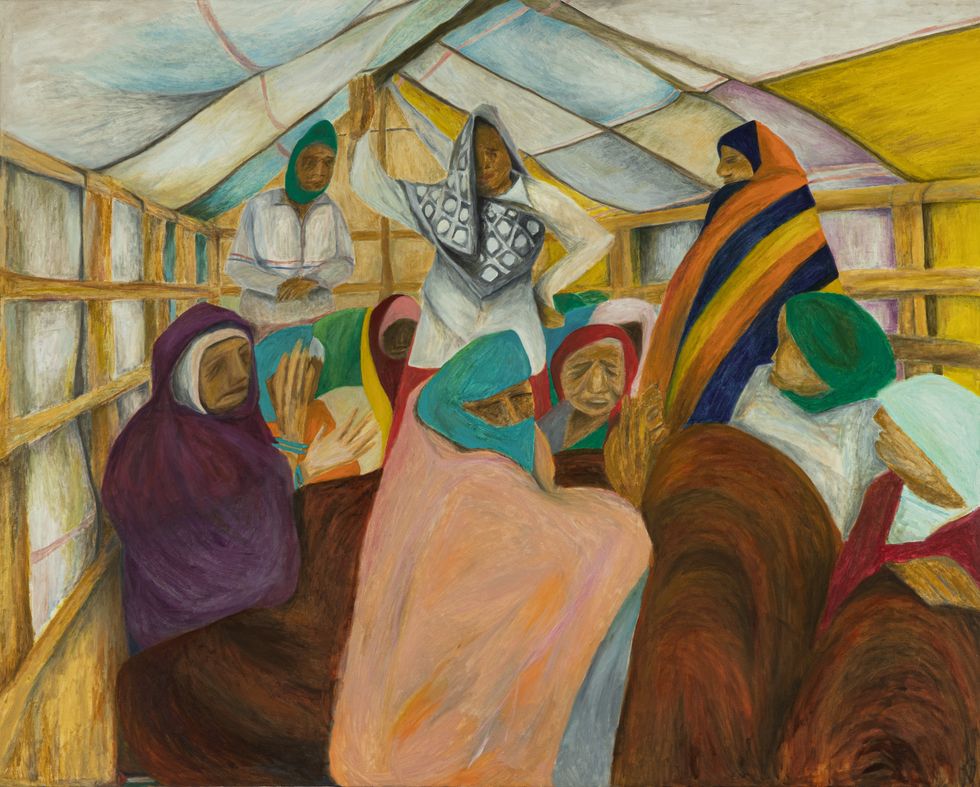Acclaimed stand-up star Sunil Patel has galloped into this year’s Edinburgh Fringe festival with his latest show Faster Horses.
The award-winning comedian follows up multiple television appearances and big performances on the live circuit with a laughter-filled show that runs throughout August.
The gag-filled show looks at everything, from his own failed enterprises, crypto bros, and lockdown business ideas to arguing that people don’t know what they want until they get it.
Eastern Eye caught up with the funny British Asian talent to discuss his new show and connection to comedy.
What is it that first drew you towards stand-up comedy?
Probably when I bought Lee Evans Live on VHS in HMV on Oxford Street in the 90s. I wanted to buy something with my saved-up pocket money, panicked and bought it because it was on display. It was mind-blowing. I couldn’t stop watching that tape and made all my friends come round and watch it.
What has been your most memorable moment in comedy so far?
Probably the three hours I spent improvising a scene with Anne Hathaway and Roger Federer for a Swiss tourism film. She had an idea for a scene where I called her fat. I don’t think it made it to the final edit.
What inspired your Edinburgh Fringe show Faster Horses?
It’s from a Henry Ford quote – “If I had asked people what they wanted, they would have said faster horses”. I guess he was saying you should ignore people and just get on with your vision. I’m not sure I agree, but then I haven’t invented the car, have I?
Tell us about the show?
Well, I thought my stand-up career was over when the pandemic started, and I had to think of something else to do with my life, so tried to write down business ideas every day. They were all awful. So, this show is about all those ideas, and the approximately 40 jobs I’ve had in my life. It’s a bit like Dragon’s Den but the audience are the dragons.
Have you ever been on or near a really fast horse?
No, I am allergic to horses.
Do you ever get nervous before going on stage?
Yes, always. If I didn’t, I would probably do very badly on stage.
Who is your own comedy hero?
I don’t think I have a hero really. I mean I love watching stand-up but haven’t laughed harder at anything than I did at that guy who slid down the steps into the Thames with his top off a few years ago. Okay, maybe he is my hero?
What do you love about the Edinburgh Fringe festival?
The weather. Rainy, cold, dark. Love it. Can’t stand London in August, it’s too hot. Also, Edinburgh is just a beautiful city to be in and you can walk everywhere (in the rain).
What is it that inspires you as a comedian?
I guess it’s just anything I find funny, from my friends, to silly things that happen to me, to hour-long reviews of mid-priced hatchbacks on YouTube.
Has comedy and being funny ever got you in trouble?
Yeah, all the time. I fell off a chair at school when I was five, and everyone laughed, so I did it again and then got told off. I think that incident set the tone for the rest of my life.
Why should we come watch your show at Edinburgh Fringe?
There’s nothing else on at 1.55pm, and I’m not taking a single day off.
Sunil Patel: Faster Horses is on until Sunday August 28 at Monkey Barrel Comedy, 9-12 Blair Street, Edinburgh EH1 1QR. www.edfringe.com






 Studio Ghibli’s hand-drawn worlds take years to perfect—can AI truly replicate the soul behind them?Ghibli Studio
Studio Ghibli’s hand-drawn worlds take years to perfect—can AI truly replicate the soul behind them?Ghibli Studio AI art tools can now mimic Ghibli’s signature style in seconds, raising ethical and creative concernsGhibli Studio
AI art tools can now mimic Ghibli’s signature style in seconds, raising ethical and creative concernsGhibli Studio As AI floods social media with “Ghibli-style” images, animators warn that true artistry can’t be automatedGhibli Studio
As AI floods social media with “Ghibli-style” images, animators warn that true artistry can’t be automatedGhibli Studio Hayao Miyazaki, the visionary creator behind Studio Ghibli, has crafted some of the most beloved animated films in historyGetty Images
Hayao Miyazaki, the visionary creator behind Studio Ghibli, has crafted some of the most beloved animated films in historyGetty Images The Firefly’s Glow AI can recreate the look of a Ghibli film, but can it ever capture the emotion behind it?Ghibli Studio
The Firefly’s Glow AI can recreate the look of a Ghibli film, but can it ever capture the emotion behind it?Ghibli Studio Miyazaki’s vision was built on painstaking hand-drawn artistry—can AI ever replicate the heart and soul behind his iconic films like Spirited Away and My Neighbor Totoro?Ghibli Studio
Miyazaki’s vision was built on painstaking hand-drawn artistry—can AI ever replicate the heart and soul behind his iconic films like Spirited Away and My Neighbor Totoro?Ghibli Studio Studio Ghibli’s animators spent months crafting each frame—AI, on the other hand, churns out “Ghibli-style” art in secondsGhibli Studio
Studio Ghibli’s animators spent months crafting each frame—AI, on the other hand, churns out “Ghibli-style” art in secondsGhibli Studio With AI mimicking Ghibli’s signature style, creators fear that the essence of the art form could be lost foreverGhibli Studio
With AI mimicking Ghibli’s signature style, creators fear that the essence of the art form could be lost foreverGhibli Studio From Totoro to Princess Mononoke, Miyazaki's hand-drawn masterpieces are irreplaceableGhibli Studio
From Totoro to Princess Mononoke, Miyazaki's hand-drawn masterpieces are irreplaceableGhibli Studio












 Manmeet K Walia
Manmeet K Walia Salima Hashmi
Salima Hashmi Tikri Border, Haryana-Delhi by Aban Raza
Tikri Border, Haryana-Delhi by Aban Raza
